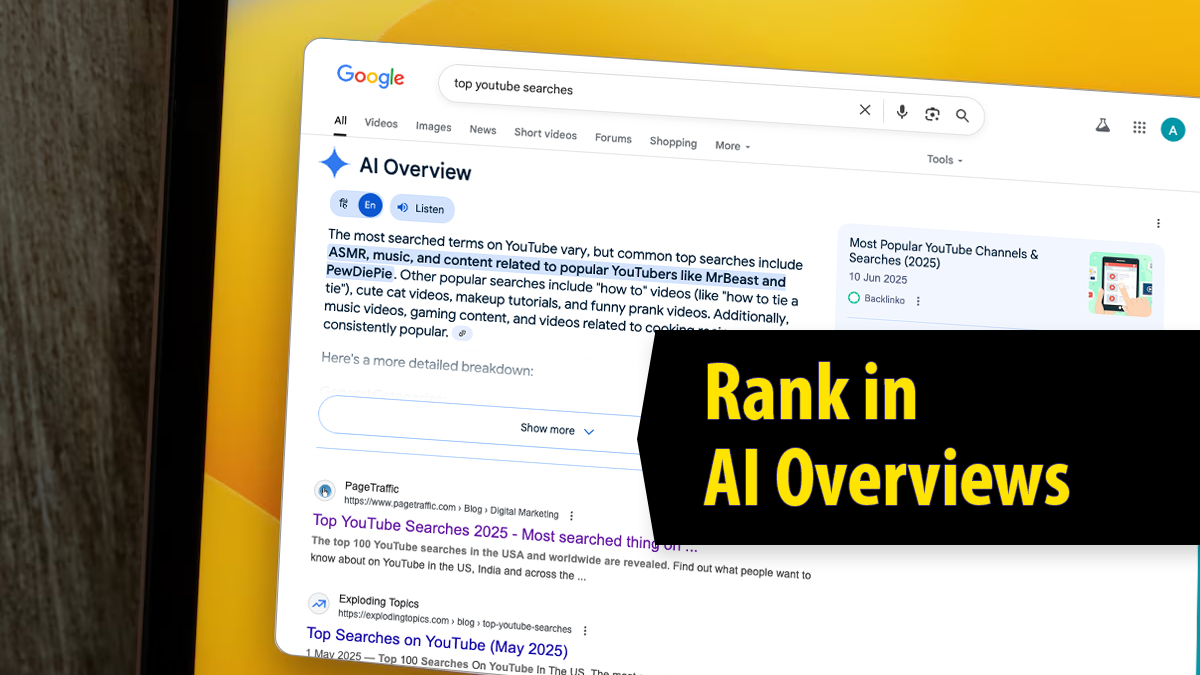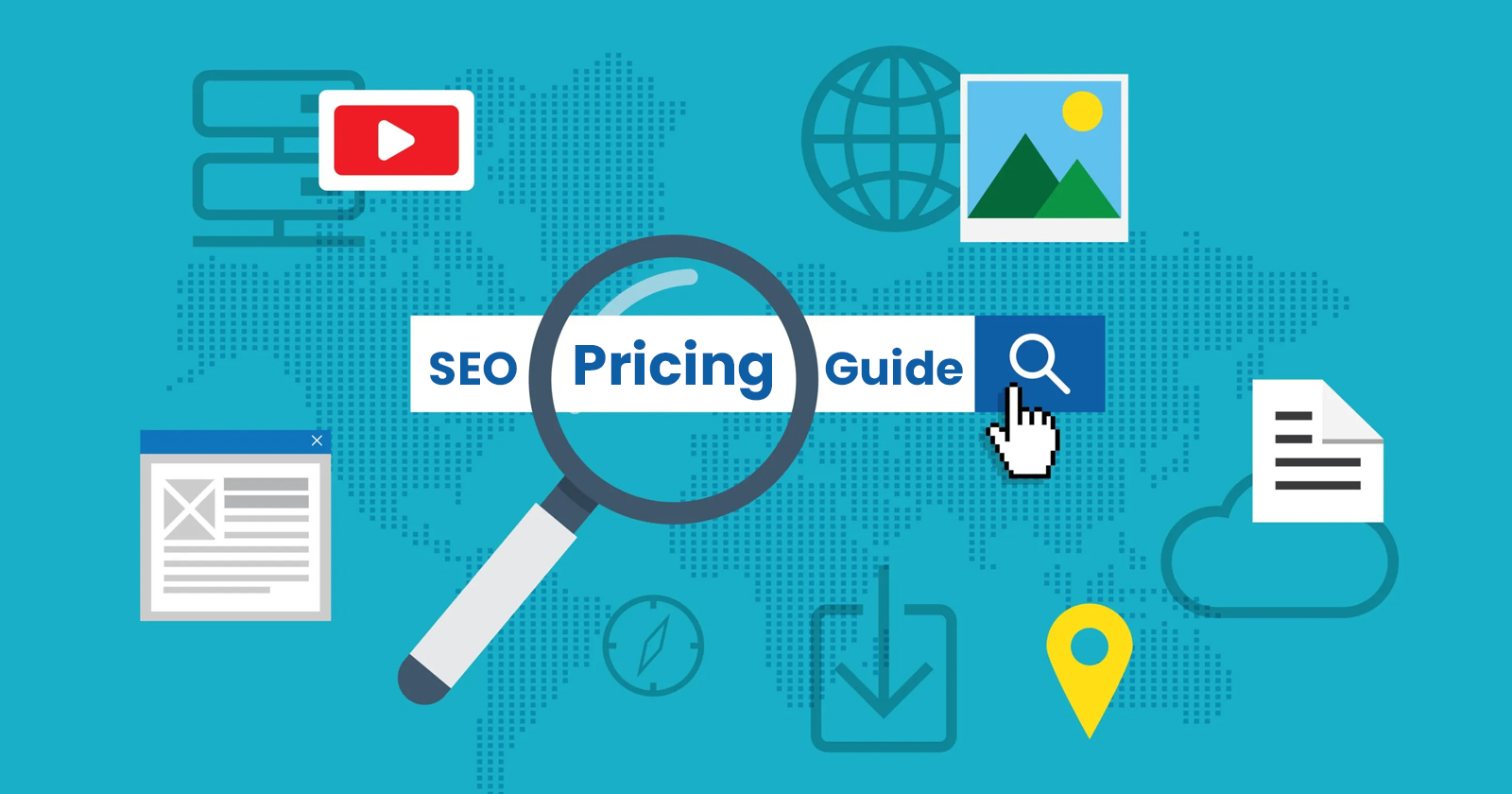In a time where information is quickly shared online, Google is always changing the way people find and read content. One of its newest features is AI overviews, which helps make searching easier by showing AI-generated summaries right at the top of the search results.
Instead of clicking on many links, users can now get quick and clear answers right away from trusted websites. These summaries are part of Google’s larger Search Generative Experience and use a mix of advanced AI technology, current data systems, and Google’s main ranking methods. But how to rank in AI overviews?
As more people start using this technology, it’s changing how we see, use, and trust information. This is a big change in how we work with search engines and online content.
This post explains the strategies you can follow to get ranked in the AI overviews.
What are AI Overviews?
AI Overviews are quick summaries created by AI for Google search results. These summaries help users find information quickly by providing basic details about a topic and links to learn more.
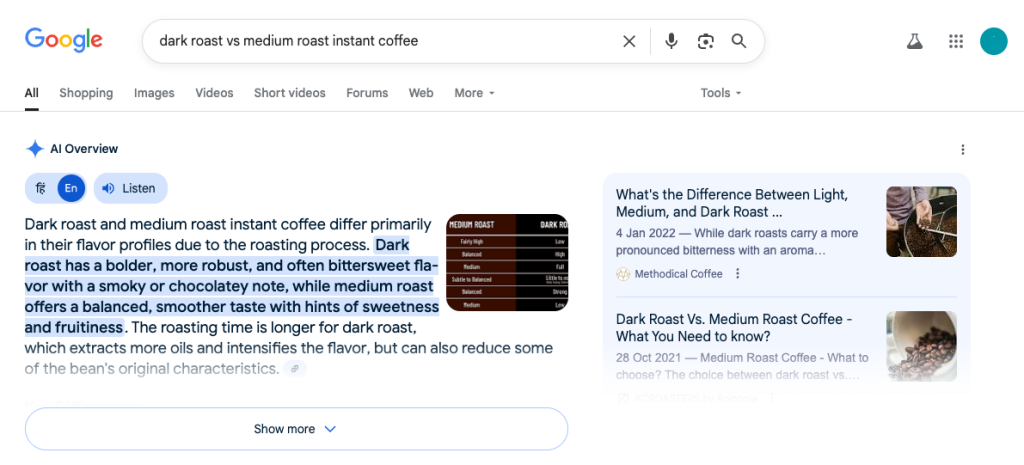
Using generative AI, these summaries collect information from different websites and present it in a clear and simple way. Introduced in Google’s Search Generative Experience (SGE), AI Overviews help improve searching by providing a quicker way to get answers without having to click on many links.
Users can click on the summaries to get more detailed explanations or check the linked sources for extra information. This feature is really helpful for complicated questions or those with many parts that need more background information.
While Google makes it easier to find information, it still encourages users to think carefully about their sources and check original content when needed. AI Overviews are part of Google’s plan to make searching easier, more useful, and more like a conversation.
Hiring an AI SEO service helps you stay ahead of the curve by making your content more discoverable in AI-generated search results and summaries.
When do Google’s AI Overviews Show Up?
Google says that AI Overviews show up when their systems think generative AI can be very useful. Recent studies found that AI Overviews show in 30% of searches, especially in searches for information. From a user’s point of view, these AI-driven highlighted answers are helpful.
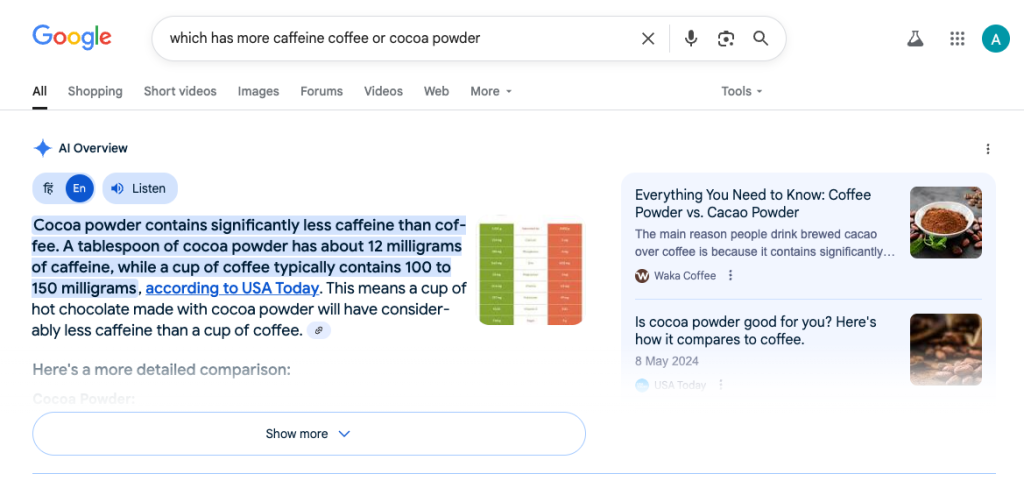
This usually happens for complicated questions or requests for information, like “How does photosynthesis work?” or “What are the signs of dengue fever?” These summaries give users quick and clear answers right in the search results, often with links to trusted sources for more details.
What Decides the Rankings of AI Overviews?
Core Ranking Systems
Google’s AI Overviews are greatly affected by its ranking systems, which decide how good, reliable, and relevant web content is. PageRank is an early Google tool that checks how trustworthy a webpage is by looking at how many other pages link to it and how good those pages are.
The Reviews System gives rewards for honest and detailed reviews from people who have actually used the product or service. It values opinions from experts or enthusiastic users the most. The Helpful Content System looks for content that is truly useful for users.
This content is made to help people, not just to get a high ranking. These systems work together to find out which web pages are the most useful for making AI-generated summaries. The better a page does with these systems, the more likely the AI will show it.
AI Models
Google’s AI Overviews use advanced language models like Gemini, PaLM 2, and MUM (Multitask Unified Model). These models can understand language, meaning, and situation very well. Gemini is Google’s newest and strongest AI model.
It is designed to understand different types of information at the same time, like text and images. PaLM 2 is good at understanding language and logic, which helps it read and understand text well.
MUM helps Google understand complicated questions, especially those that need thinking or comparing, in different languages and types of information. These models work together to create clear, accurate, and relevant summaries.
They look at not just the words in the content, but also what it means, tone, and how it’s organized. The power and accuracy of these AI tools are very important for keeping Google’s AI overviews reliable and high-quality.

Databases
Google’s AI overviews use structured data from sources like the Knowledge Graph and Shopping Graph to make sure the facts are correct and to understand things better. The Knowledge Graph is a big database filled with interconnected information about people, places, things, and ideas.
It helps AI models see connections between things, like how “Albert Einstein” is related to “Theory of Relativity” or “physics”. The Shopping Graph, however, is about current product information, such as what’s in stock, customer reviews, prices, and availability.
It helps provide AI overviews about shopping questions, giving users clear and correct information about the products they are looking into. These graphs help make sure that content created by AI is accurate and current, reducing false information.
Relevance of the Topic
The topic of a user’s question is very important in deciding if an AI overview shows up and what information it has. Google’s systems check how well a topic aligns with good content and if it can be explained with a summarized version.
Topics that are complicated, have many parts, or are often studied, like health issues, scientific methods, or comparisons, are more likely to lead to AI overviews. The system finds web pages that have clear and organized information specifically about that topic.
If the content clearly and effectively covers the topic, it is more likely to be included in the summary. Also, popular topics or ones that more people are becoming interested in might be given priority, as long as there is trustworthy information available.
Search Intent
Search intent means the goal or purpose of what someone wants when they search for something. Google’s AI overviews are usually shown when people want to find out information, like learning how something works, for example, “how do solar panels work?”
These questions usually need a clear and simple answer. Google’s systems look at not only the words you use but also what you mean and how you ask your question. This helps them figure out if you want a quick answer, a comparison, or a detailed explanation.
People looking for something specific, like “Facebook login” or “buy running shoes,” are less likely to see an AI summary unless there is extra helpful information included. Content that matches what the user is looking for is given higher importance.
Also Read: What Is User Intent: Understanding How People Search
Integration of Multimedia
Using multimedia like images, videos, diagrams, charts, and interactive content can help a webpage get picked by AI for an overview. Google believes that pictures, videos, and other media help people understand things better, especially when the topic is about how to do something or is visual.
For instance, a video showing how to cook pasta step by step or a labeled picture of a car engine can really help people understand better. When used properly, multimedia content shows that the page is helpful and designed for the user.
Google’s AI systems check if the media helps explain things better, supports the main message, and matches what the user is looking for. Good descriptions and alt-text help the AI understand images better.
Also, using pictures, videos, and other media can help people stay interested and make it easier for everyone to understand the content, which helps make the page better. Text is important, but adding carefully chosen images and videos makes the page more useful.
Structured Data
This is a type of code added to web pages to help crawlers know what the page is about. Google uses this information to find important details, such as recipe ingredients, product prices, or answers to common questions. This helps create features like AI overviews.
This data is usually written using schema.org words in formats like JSON-LD. By tagging certain parts like “author,” “date published,” and “review rating”, website owners help AI systems understand their content better.
Pages that have clear and correct information are more likely to be shown in AI overviews because the details are well-organized and checked for accuracy. For example, if a website uses a special format to show a list of symptoms for a sickness, Google’s AI can easily include that information in an overview.
How do AI Overviews Affect SEO?
As a user, AI Overviews can help you find information more quickly. But what does this mean for someone working in SEO? AI affects search engine optimization in three main ways:
Visibility
Google’s AI snapshots show up at the top of search results and include more than 1700 pixels. In this snapshot, users can see the answer generated by AI and the top three links to check out. If they want, users can switch the snapshot to show all suggested links.
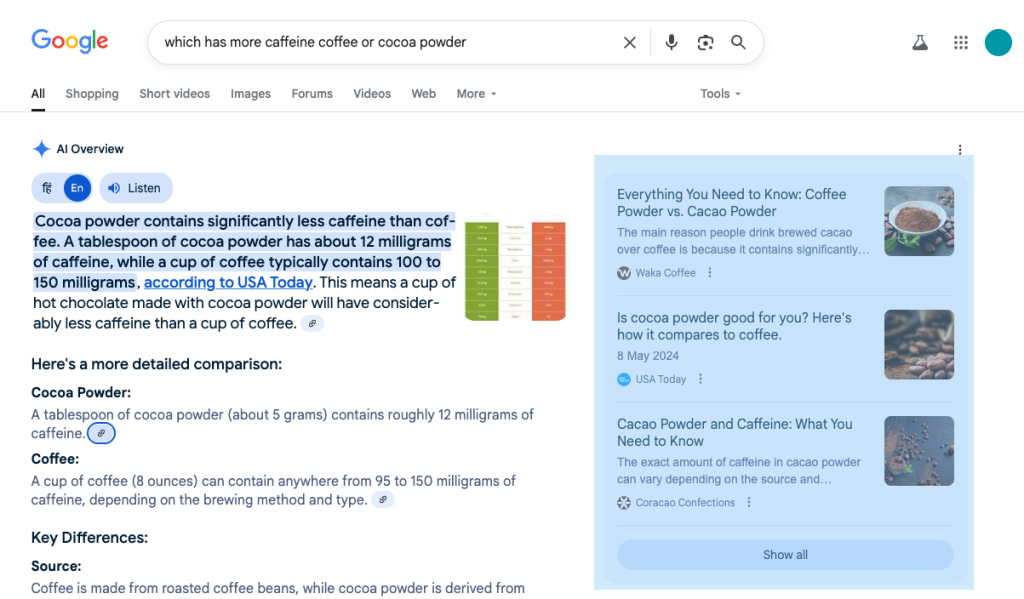
Websites in the top three will get more attention, while sites not on that list will get less visibility. Traditional organic results will drop down by over 140%. This change highlights how important it is to get included in AI Overviews. Being in these overviews usually means you also rank well in regular search results.
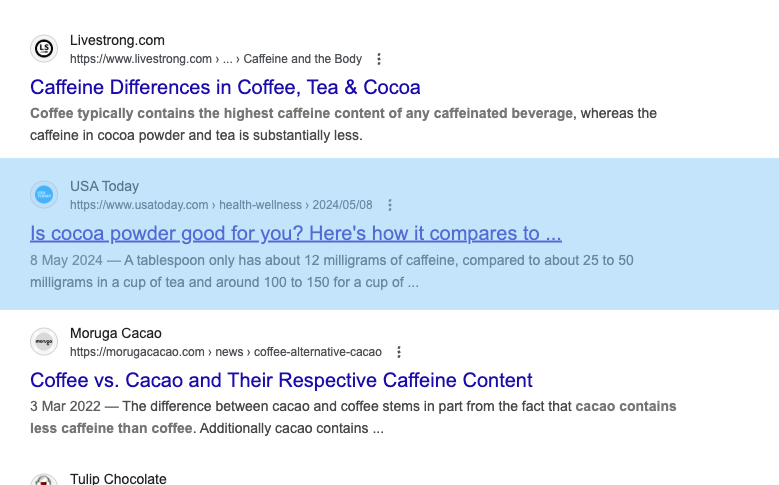
Traffic
AI overviews can quickly answer a user’s question, so they don’t have to go to a website, just like featured snippets do. The good thing about this decline is that it can help bring in more qualified visitors.
Actually, more marketers are saying that their website visits are going down, but they are making more money. HubSpot had a situation where it was said that their organic traffic dropped by 80%. However, the business still grew its revenue by 21% in 2024.
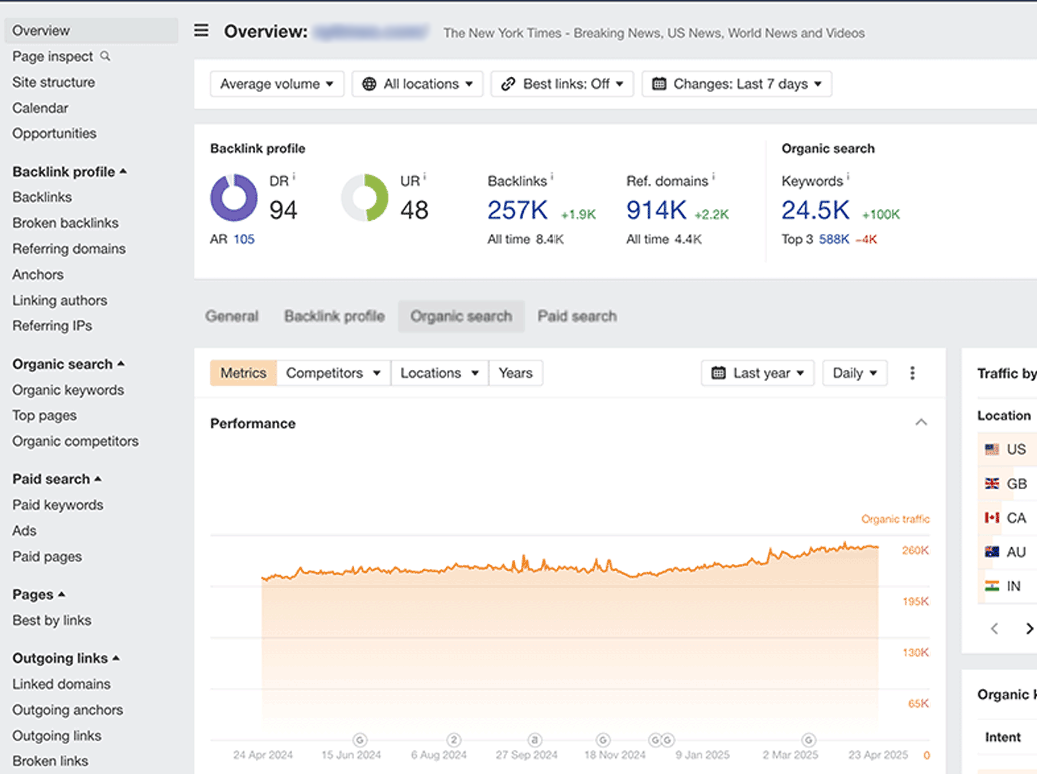
Think about this example: “Which has more vitamins, vegetables or fruits?” You don’t need someone who’s discussing the answer with their friends when they visit your site. That person will probably come to your website, get the answer they need, and then leave.
They have no interest in your product or service. In contrast, someone who is thinking about changing their lifestyle, like trying to intake more vitamins, is more capable. Their visit might lead to a better discussion, such as looking deeper into how vitamin amounts differ between different types of vegetables and fruits.
For people who work in SEO, this change is one of the hardest to deal with. In addition to adjusting their goals (websites are expected to lose 25% of organic traffic because of AI Overviews), SEOs need to explain to their leaders that investing in SEO is still important.
This is because good SEO helps websites show up in AI-powered results.
Revenue
AI overviews can also affect how much money you make from SEO. This situation often occurs when companies do only the basic SEO or stop their SEO work. Research shows that companies that do well in search results are more likely to do well in AI overviews.
- 74% of the three websites listed in AI Overviews are in the Top 10 list.
- 73% of sites in AI Overviews are in the top 10 rankings.
It’s important to note that Google is still working on improving AI Overviews. The company plans to spend $75 billion on projects related to artificial intelligence and has noticed an increase in website visitors and ad money from AI summaries.
Overall, these changes in how visible a site is, the amount of traffic it gets, and the money it makes push SEOs to rethink their approach in:
- Success metrics
- Optimization plan
- Leadership updates
Also Read: Perplexity SEO-How to Rank in Perplexity Answers
How Can I Keep Track of My Progress in AI Overviews?
You can’t do that by yourself unless you use another tool. Although impression, click, and average position data from AI overviews goes into Google Search Console, it can’t be filtered. You can’t separate AI overview data from regular search result information.
Different SEO experts have tried different solutions, but most of these have limits on how well they work. One of the best tools for tracking AI Overview is OmniSEO. With OmniSEO, companies can see how visible they are in overviews powered by AI, such as in:
- AI Overviews
- ChatGPT
- Perplexity
- Microsoft Copilot
- Meta AI
- Apple Intelligence
They can keep track of how well competitors do in search results for different keywords without having to search and log everything manually, then do it all again in a few weeks. Even though there are free options like ZipTie.dev, nothing is as complete as OmniSEO.
How to Rank in AI Overviews?
Follow Good SEO Practices
In AI overviews, Google uses its main ranking systems, which cover different areas like:
- PageRank
- RankBrain
- BERT
- Usefulness of the content
- Freshness of the content
- Reviews
Using the right methods that match these systems will help your business show up in AI overviews. Most companies that want to start using AI already use SEO. For example, think about:
- Creating original, useful, and timely content.
- Getting helpful links through useful content, tools, or research.
- Getting online reviews on places like GBP and other review websites.
- Creating a clear website structure for users and bots to find their way around.
- Using important words in website addresses to connect with people.
Make the Content More Interesting
Generative AI tools like ChatGPT, Microsoft Copilot, and AI Overviews reply to information in this way:
- Anecdotes or personal experiences.
- References that include recent studies, internal information, and news articles.
- Instructions, and how-to-dos.
This improvement is like E-E-A-T upgrades, which stand for Experience, Expertise, Authoritativeness, and Trustworthiness. Talking with team members who work directly with clients and learning about changes in the industry are good ways to make this happen.
Google’s AI values content that has character. Users don’t need to search a forum or website to find the right answer. The answer is clearly given by the AI, as to how, when, and where to do it.
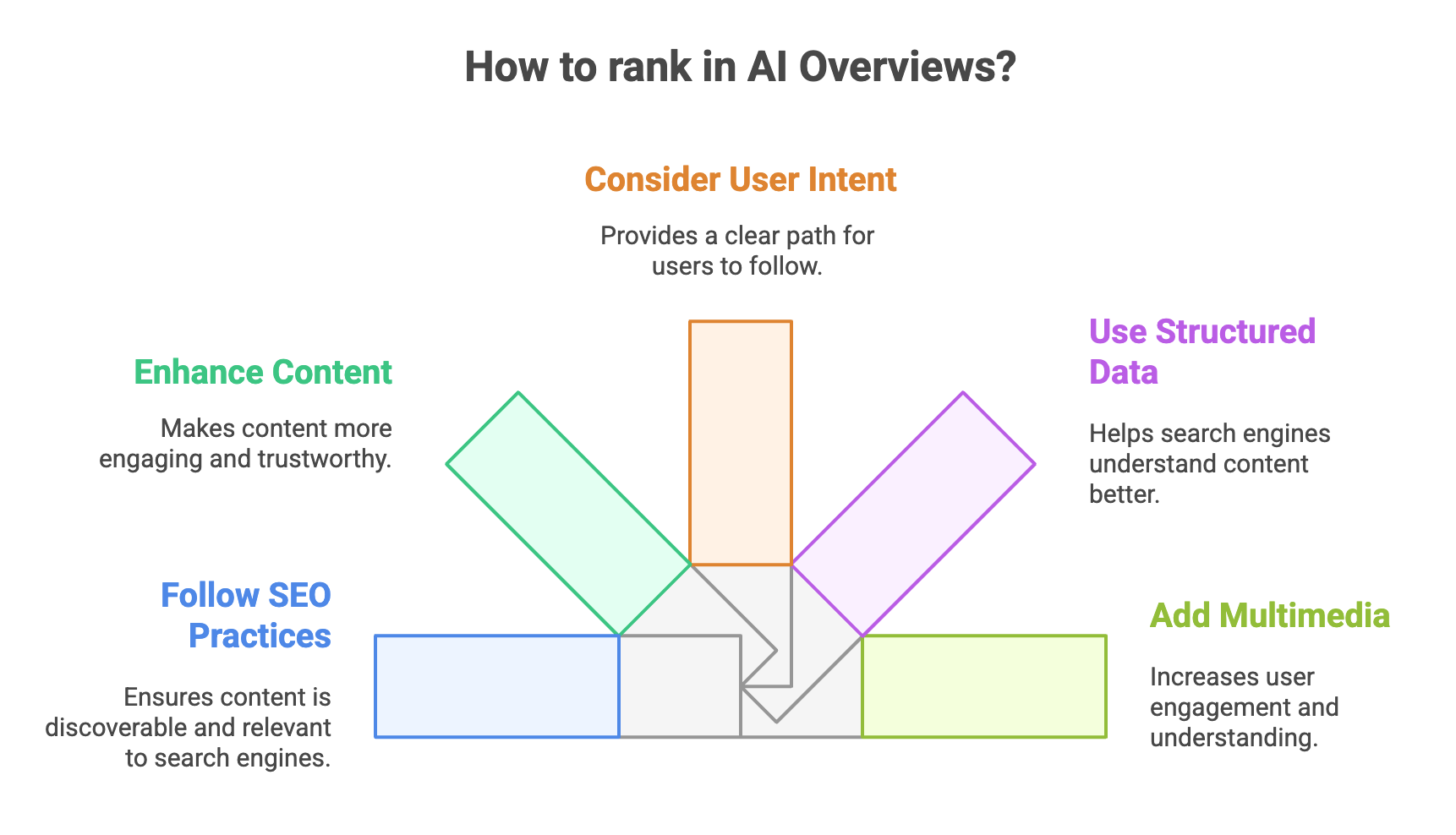
Think About the Next Step
The name says it all, AI overviews give a summary of a topic. If you look up “which has more vitamins, fruits or vegetables?”, you will find answers to these questions:
- Vitamins that vegetables have
- Vitamins that fruits have
- Antioxidants in vegetables and fruits
- Fiber in vegetables and fruits
That’s a lot of information. A guide to better health can help by showing what people want to know first, second, third, and so on about it. When creating SEO content, think about what the user will want to do next and include that in the page.
Use Structured Data
Using it is like making a clear request to search engines. Structured data helps crawlers understand information about a website better. For example, it can show details about a product, like its price and availability.
Free tools like Structured Data Markup Helper help you easily create structured data for your website. Some usual examples are Recipes, Products, Articles, and FAQs. Just remember to use tags that properly explain your page.
Add Various Types of Media
There are lots of different kinds of media you can use for online content, such as video, image, and GIF. Multimedia lets users engage with content in different ways, such as watching a video to learn about the differences between vitamins and fibers.
When creating multimedia for your content, think about what would be helpful for users and improve your content. For example, a person reading a beginner’s guide about how cells divide will probably find a picture showing the different stages useful.
You can create multimedia in different ways, such as hiring a freelancer or using a free tool like Canva. No matter what, remember to follow good SEO rules. Add descriptions for images and upload videos to YouTube since Google’s AI often refers to them.
To Conclude
Google’s AI overviews are a big improvement in how we search for information. They combine advanced technology with many years of experience in search to make finding information quicker, smarter, and easier.
Using strong AI models like Gemini and helpful tools like the Knowledge Graph, these summaries give users clear insights gathered from reliable sources. However, how well they work depends on many things, like the quality of the content, how it’s organized, the use of different types of media, and what the users want.
AI overviews have some limitations, but they try to make searching easier and more helpful for users. As Google keeps improving this feature by listening to feedback and using new technology, how people search, and make choices online will likely change in the future.
AI overviews show that Google is dedicated to making information easy for everyone to access and use. This is not just through links anymore, but with smart, clear summaries that are designed to fit what users actually need.
FAQs
Are AI overviews taking the place of regular search results?
No, AI overviews are not taking the place of regular search results. Instead, they are placed above the normal list of links to make things easier. Users can keep scrolling down to see entire web pages, news stories, or videos. AI overviews are a way for Google to update and improve search, but they are designed to add to, not take away from, the regular search experience. Users who want to go to the original sources can still click on them as they did before.
Can AI overviews be wrong?
Yes, even with advanced technology and reliable sources, AI overviews can sometimes have mistakes or old information. AI-created content relies on how good and precise the information is that it uses, and mistakes can happen in understanding it. That’s why Google provides links to the original sources below each summary, so users can check the information for themselves. It’s always smart to check important information again, especially about things like health, money, or legal issues.
Can website owners make their sites better for AI overviews ?
Yes, content creators and SEO experts can do some things to increase their chances of being included in AI overviews. This means using organized data, writing in a clear and informative way, adding useful images or videos, and ensuring the content matches what people are looking for. Also, content that shows knowledge, authority, and reliability is more likely to be preferred by Google. There’s no sure way to get noticed, but doing the right things can really help.
Are AI overviews available everywhere and in all languages?
Right now, AI overviews are not available worldwide. They are slowly being introduced through Google’s SGE, which is still being tested in some areas, especially in the US. Availability relies on things like where the user is, their language settings, and if they have chosen to use new search features. Google plans to slowly introduce AI overviews to more countries and languages. They are taking their time to make sure everything works well and fix any problems before launching it worldwide.
Can users disable AI overviews or choose not to use them?
Right now, there isn’t a specific toggle or option for users to turn off AI overviews completely. But if users don’t find them useful, they can just scroll down to see the regular search results, which are still available below them. Since AI overviews are still changing, Google is probably paying close attention to what users think. In the future, there might be more ways to customize things, but for now, they are shown automatically when Google thinks they are important.
